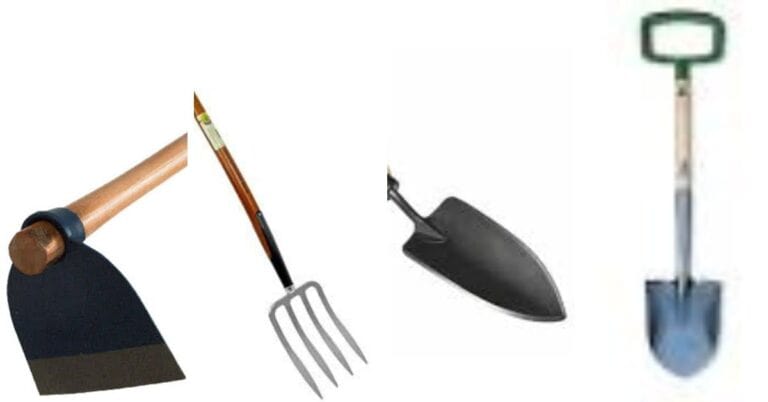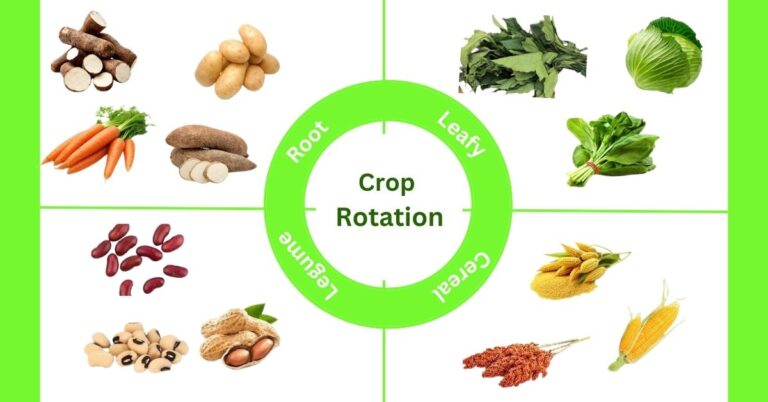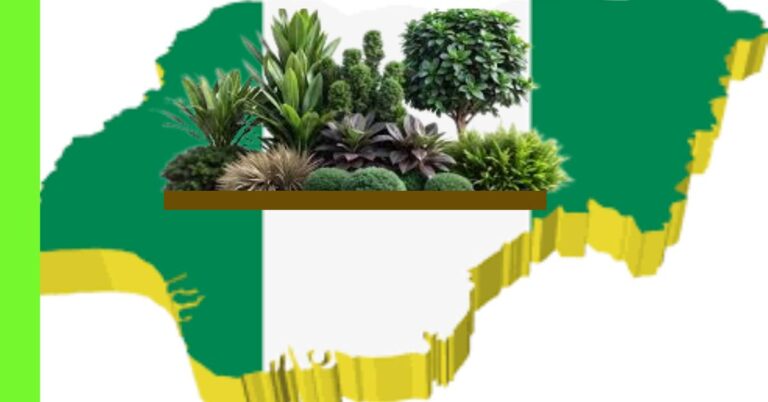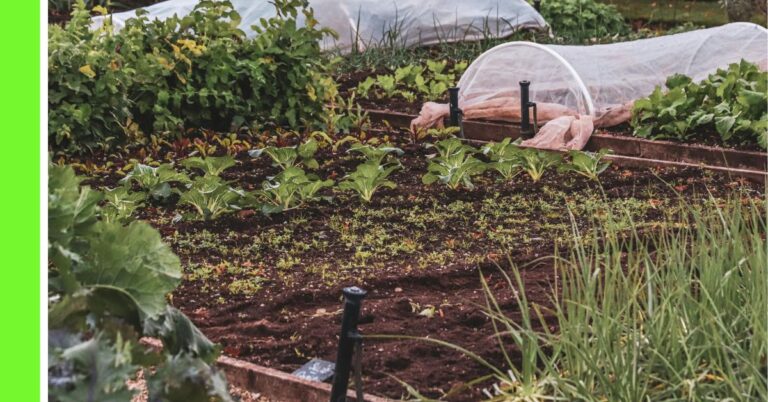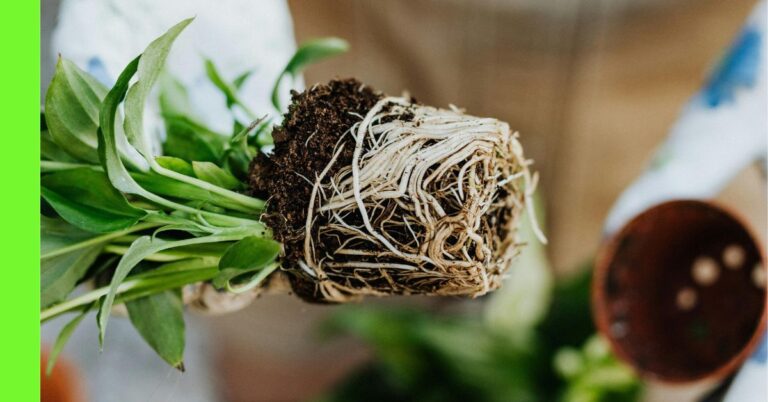Seasonal Crop Care: Gardening Maintenance for Rainy and Dry Seasons

Gardening is an art that dances with the rhythms of nature.
The health and productivity of a garden rely not only on what is planted, but also on how well crops are maintained across different seasons.
Two of the most critical periods in many regions are the rainy season and the dry season.
Each comes with its own set of challenges and requirements.
Proper seasonal crop care ensures healthy plants, maximised yield, and long-term soil fertility.
Nigeria’s climate is defined by two dominant seasons: the rainy season and the dry season.
These seasons directly influence the success of gardening and crop production,
Whether you’re growing vegetables in your backyard in Lagos, cultivating yams in Enugu, or managing a small farm in Kaduna, understanding how to maintain your garden throughout the year is essential.
This guide focuses on seasonal crop care during the two major seasons and offers practical maintenance tips for optimal crop health and yield.
Understanding Your Local Climate
Before diving into maintenance tasks, it’s vital to understand your local climate calendar.
Knowing when each season typically begins and ends in your region will allow for better planning and preparation.
Nigeria has two primary seasons:
- Rainy Season: Typically runs from April to October in the southern regions and from May to September in the north.
- Dry Season: Spans from November to March, with the harmattan (a dry, dusty wind) influencing many areas during December and January.
Recognising your local climatic patterns will help you decide the best planting and maintenance schedules for your crops.
Rainy Season Crop Care
The rainy season brings a natural abundance of water, which is both a blessing and a potential curse.
While irrigation needs are reduced, the increase in humidity and wet soil can lead to several problems, like fungal diseases, nutrient leaching, soil erosion, and waterlogging.
1. Soil Preparation and Drainage
One of the first things to focus on before the rains begin is drainage.
Without proper drainage, crops may suffer from root rot and other waterborne diseases.
- Build raised beds and ridges to elevate crops above the waterline.
- Add organic matter like compost to improve soil structure and water retention balance.
- Create channels or furrows, or trenches between rows to redirect excess water.
2. Mulching for Moisture Control
Mulching is often associated with the dry season, but it’s equally useful during the rainy season.
- Mulch use (straw, leaves, dry grass, palm fronds, rice husks, or wood shavings) to prevent soil erosion and splashing that can spread diseases.
- It also helps regulate soil temperature, prevent erosion, stop soil nutrients from washing away and prevent weed growth.
3. Pest and Disease Management
Fungal infections like blight, mildew, and root rot are common during the rainy season.
- Regularly inspect crops for signs of fungal infections such as mildew or blight.
- Use natural pest control methods like neem oil or insecticidal soap.
- Ensure proper spacing between plants for better airflow.
4. Pruning and Staking
Heavy rains and wind can damage tall or weak-stemmed plants.
- Prune excess foliage to reduce the weight and risk of breakage.
- Stake or trellis vulnerable plants like tomatoes, okra, beans, and peppers to keep them upright. Use bamboo sticks, stakes, or plant cages for support
5. Timely Planting
Choose crops that thrive in the rainy season. Crops that thrive in rainy conditions in Nigeria include:
- Maize
- Okra
- Fluted pumpkin (Ugu)
- Cassava
- Cocoyam
- Amaranth (Green leaf)
Plant early in the season so crops can take advantage of consistent rains before the flooding risk increases in late rains.
Dry Season Crop Care
The dry season in Nigeria is often marked by intense sunlight, low humidity, and the dusty harmattan.
Maintaining your garden during this time requires thoughtful water and heat management.
1. Water Conservation and Irrigation
Water is scarce during the dry season, especially in northern Nigeria.
- Practice drip irrigation using perforated containers or recycled plastic bottles.
- Water early in the morning or late in the evening to minimise evaporation.
- Harvest rainwater during the rainy season for use during dry months.
2. Maximise Moisture with Mulching
Just like in the rainy season, mulching plays an important role here.
- A thick layer of organic mulch helps retain moisture, cool the soil, and reduce evaporation.
3. Choose Heat-Tolerant Crops
Dry season gardening is best suited to crops that can tolerate the sun and require less water.
Recommended crops include:
- Watermelon
- Sweet potatoes
- Lettuce (with shade)
- Tomatoes (with irrigation)
- Eggplant
- Cowpea (beans)
In many regions of Nigeria, dry season farming using irrigation is a great opportunity for increased income, especially when vegetable prices are higher.
4. Provide Shade and Wind Protection
Harmattan winds and strong sun can dry out soil and damage plants.
- Use shade nets or plant under trees.
- Construct simple windbreaks with palm fronds, bamboo, or local materials.
5. Replenish and Rotate
The dry season is perfect for improving your soil and preparing for the next growing cycle.
- Add composted animal manure or kitchen waste.
- Use green manure crops like cowpea or legumes to enrich the soil.
- Rotate crops to prevent pest buildup and maintain soil fertility.
Gardening Habits That Work All Year Round
Whether it’s raining or dry, some habits are timeless and essential in Nigerian gardening:
Regular Garden Checks
Inspect your crops for pests, signs of stress, or disease weekly. Early detection prevents problems from spreading.
Fertilising at the Right Time
During the rainy season, nutrients may be washed away, so apply organic fertilisers like poultry droppings, compost tea, or NPK in small, repeated doses. In the dry season, use slow-release organic inputs.
Weed Management
Weeds are aggressive in both seasons and compete for nutrients and water.
- Hand-weed regularly.
- Use mulch or cover crops to suppress weed growth naturally.
Creating a Seasonal Garden Calendar
A personalised seasonal calendar helps track when to plant, harvest, fertilise, and prune.
Mark:
- Start and end dates for planting in the rainy and dry seasons
- Seedling start dates and transplant windows
- Expected harvest times
- Weekly or bi-weekly maintenance tasks (weeding, pest inspection, etc.)
- Dates for applying fertiliser or compost
- Local festival or market dates, if you sell your crops
You can even mark LGA extension advice dates when agriculture officers provide local insights.
Digital tools like garden planners, gardening apps or simple spreadsheets can be very effective for tracking these events.
Leveraging Community and Technology
Don’t garden alone; join local gardening groups or forums where people share region-specific advice.
Join local WhatsApp, Facebook or other groups for farmers and gardeners.
This is very beneficial to gardeners.
Join our platform, Floratalk Hub, to connect with other gardeners and farmers.
Conclusion: Let the Season Guide You
Nature doesn’t wait, and neither should you.
Gardening is also not about fighting the seasons, it’s about working with them.
From the lush rains of June in the south to the dry winds of harmattan in the north, Nigeria’s climate offers both challenges and opportunities.
With the right knowledge and a little planning, you can garden successfully all year long.
By implementing proper maintenance strategies tailored to rainy and dry seasons, you’ll not only ensure the health and yield of your garden but also build resilience into your gardening practice.
Whether you’re sowing under heavy clouds or tending under a blazing sun, remember: with the right seasonal care, every season is a growing season.
Therefore, Plan smart, adapt quickly, and grow always.
Hope this article was helpful.

